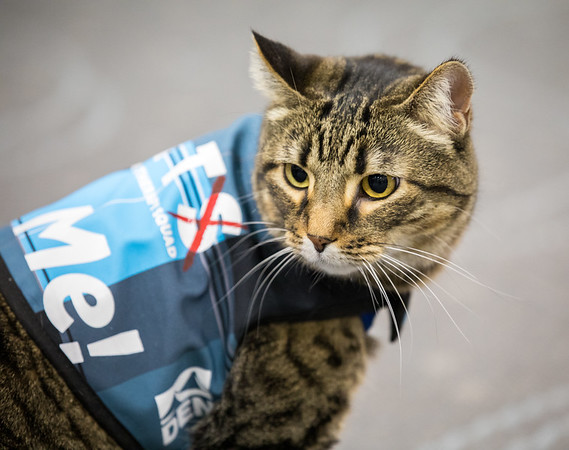Let me tell you the fascinating tale of how a clever cat managed to sneak into the well-known dog therapy program at the airport. It was quite unexpected, and the staff and handlers of the therapy dogs were taken aback by this unusual situation. The dynamics that unfolded were truly intriguing as the feline effortlessly became a part of the program and won over the hearts of everyone involved.

The video footage of a cat’s mischievous adventures in an airport and therapy dog facility has captured the attention of viewers worldwide. The feline displays impressive agility and cunning, as it engages in playful interactions with both therapy dogs and airport personnel. Its clever hiding spots add to the intrigue of its antics, leaving viewers amazed at the cat’s intelligence and charm.
Beyond the entertainment value, the video highlights the power of animal connections and unexpected bonds formed between different species. The heartwarming relationships that develop between the cat and the therapy dogs demonstrate the positive impact these connections can have on emotional well-being. Passengers and staff alike are comforted, and their spirits lifted by the presence of these furry friends. Specific instances of the feline’s ability to bring joy and laughter to those it encounters are a testament to the importance of such therapy animal teams.

The Advantages of Therapy Animals at Airports
Explore the important role that therapy animals play in airport settings and the positive impact they have on travelers by reducing stress levels and enhancing overall travel experiences. Investigate the scientifically proven advantages of animal-assisted therapy, such as decreased anxiety and improved mood. Additionally, showcase instances where other airports or organizations have successfully implemented similar programs to benefit passengers’ well-being.
The Distinctive Contribution of Felines: Extending the Program’s Reach
Emphasize the particular qualities that felines bring to the existing canine therapy program. Examine how the presence of cats resulted in increased traffic and attention, thus further promoting the program’s mission. Also, consider broadening the program’s scope by incorporating both feline and canine therapy animals to cater to a broader range of passenger preferences and needs.

Lessons can be drawn from this experience, particularly the importance of embracing unconventional animal therapists and recognizing the diverse ways in which they can provide comfort and support. It is essential to realize that therapy animals need not only be dogs, but any species that can offer emotional or psychological benefits to individuals who interact with them.
This incident should encourage other organizations and airports to consider broadening their therapy animal programs beyond just canines. It demonstrates the positive impact that different animals can have on people’s lives, including reducing stress and anxiety levels, boosting mood, and increasing social interaction.
In summary, the cat infiltrating the canine therapy program highlights how diverse animal therapists can be and the vital role they play in promoting mental health and wellbeing. By being open to unconventional animal therapists, we can provide more options for people to receive the support they need in times of distress.
This amazing cat has brought happiness and laughter to both airport workers and travelers, while also showing the benefits of including unconventional animals in therapy programs. By befriending the therapy dogs, this cat demonstrates the incredible bond that can form between animals of different species. It’s a beautiful reminder that animals have the ability to offer emotional support and form deep connections with one another. The heartwarming friendship between these unexpected companions is proof of the universal language of empathy.
